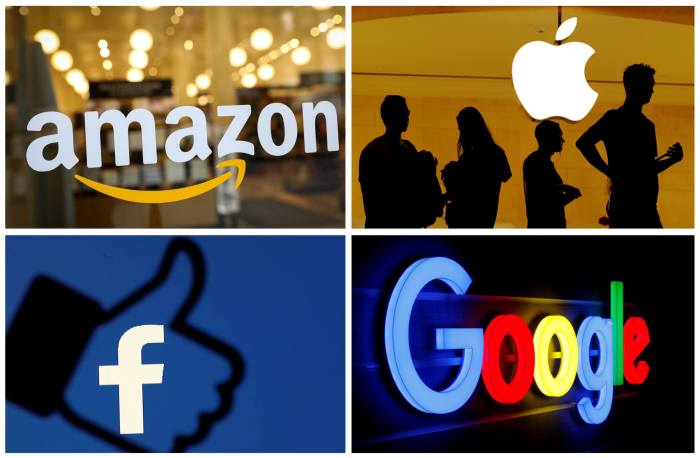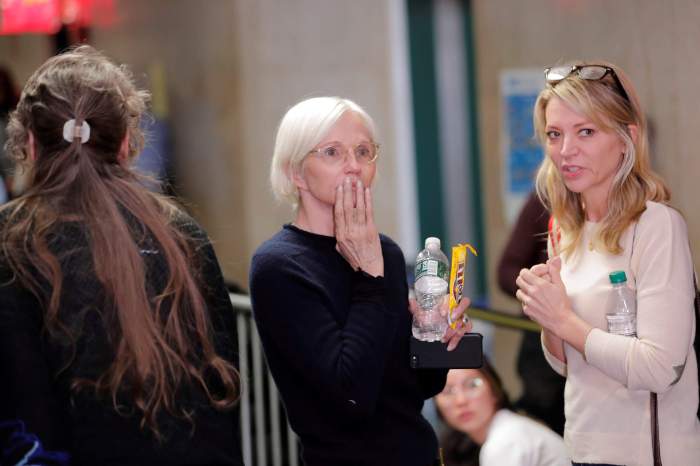By Lucia Mutikani
WASHINGTON (Reuters) – U.S. consumer spending slowed in January and could lose further momentum as the fast-spreading coronavirus outbreak, which has sparked a stock market sell-off and revived fears of a recession, causes households to tighten their purse strings.
Other data on Friday showed the goods trade deficit contracted sharply last month as both imports and exports declined. While the narrowing goods trade deficit could be a boost to the calculation of gross domestic product, a lot depends on how the coronavirus unfolds in the United States.
The coronavirus epidemic, which has killed nearly 3,000 and infected at least 80,000 people, most of them in China, is viewed by financial markets as the catalyst that could interrupt the longest economic expansion on record, now in its 11th year.
Federal Reserve Chair Jerome Powell sought to calm financial markets on Friday saying “the fundamentals of the U.S. economy remain strong.” Powell also acknowledged that “the coronavirus poses evolving risks to economic activity,” and said the U.S. central bank would “use our tools and act as appropriate to support the economy.”
The Fed bank cut interest rates three times in 2019. Financial markets have fully priced in a 25 basis points rate cut at the Fed’s March. 17-18 policy meeting, according to CME Group’s FedWatch Tool.
“Consumers shielded the economy from global headwinds for most of 2019 but they won’t prove immune to the coronavirus outbreak,” said Lydia Boussour, a senior U.S. economist at Oxford Economics in New York. “Persistently low inflation bolsters the case for a Fed rate cut as soon as March given the sharp tightening in financial conditions.”
The Commerce Department said consumer spending, which accounts for more than two-thirds of U.S. economic activity, increased 0.2% last month as unseasonably mild weather reduced demand for heating and undercut sales at clothing stores. Consumer spending shot up 0.4% in December.
Economists polled by Reuters had forecast consumer spending gaining 0.3% in January. While a separate report on Friday from the University of Michigan showed its consumer sentiment index increased to a near two-year high in February, it noted that a fifth of respondents mentioned the coronavirus in the final days of the survey in part because of the plunge in stock prices.
“With consumers often responding to changes in stock markets, some weakening in sentiment could be coming soon,” said Daniel Silver, an economist at JPMorgan in New York.
Still, consumer fundamentals remain healthy. Personal income jumped 0.6% in January, the most since February 2019, after gaining 0.1% in December. Income was boosted by the annual cost of living adjustment for social security recipients and other government welfare programs.
Wages rose 0.5% in January after gaining 0.1% in the prior month. Savings raced to $1.33 trillion last month, the highest since March 2019, from $1.26 trillion in December.
Wall Street’s main indexes slipped into correction territory on Thursday and stocks extended their plunge on Friday, but pared losses after Powell’s comments. U.S. Treasury prices rallied, sending the yield on the two-year note below 1% for the first time since 2016. The dollar fell against a basket of currencies.
TAME INFLATION
Consumer prices as measured by the personal consumption expenditures (PCE) price index edged up 0.1% in January. The PCE price index was held back by a 0.7% drop in the cost of energy goods and services, offsetting a 0.3% gain in food prices.
The PCE price index increased 0.3% in December. In the 12 months through January, the PCE price index accelerated 1.7%. That was the biggest gain since December 2018 and reflected the drop of 2019’s low readings from the calculation. The PCE price index advanced 1.5% year-on-year in December.
Excluding the volatile food and energy components, the PCE price index ticked up 0.1% in January after rising 0.2% in December. That lifted the annual increase in the so-called core PCE price index to 1.6% in January from 1.5% in December.
The core PCE index is the Fed’s preferred inflation measure. It missed the central bank’s 2% target every month in 2019.
When adjusted for inflation, consumer spending nudged up 0.1% in January after a similar gain in the prior month. That suggests consumer spending got off to a slow start in the first quarter after cooling considerably in the final three months of 2019. Consumer spending increased at a 1.7% annualized rate in the fourth quarter, stepping back from the July-September quarter’s brisk 3.2% pace. The economy grew at a 2.1% rate in the fourth quarter, matching the third quarter’s pace.
The coronavirus epidemic prompted Goldman Sachs early this week to cut its first-quarter gross domestic product growth estimate by two-tenths of a percentage point to a 1.2% rate. Growth estimates for the January-March quarter were already on the low side because Boeing
But the shrinking goods trade deficit could somewhat limit the downside to GDP growth. A third report on Friday, the Commerce Department said the goods trade deficit contracted 4.6% to $65.5 billion in January. Goods imports tumbled 2.2% last month and exports dropped 1.0%.
The department also reported retail inventories were unchanged in January after edging down 0.1% in the prior month.
Retail inventories, excluding motor vehicles and parts, the component that goes into the calculation of GDP, increased 0.3% last month after gaining 0.1% in December. Wholesale stocks fell 0.2% in January after declining 0.3% in December.
While the coronavirus is disrupting supply chains for manufacturing, some sections of the industry do not appear to be experiencing significant distress.
The Chicago Purchasing Management Index rose 6.1 points in February to a reading of 49.0, the highest level since August 2019, a fourth report showed. The joint MNI Indicators and ISM-Chicago survey suggested a marginal impact on businesses in Chicago area from both the coronavirus and last month’s signing of a “Phase 1” trade deal between the United States and China.
(Reporting by Lucia Mutikani; Editing by Diane Craft)
























